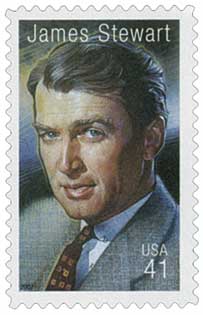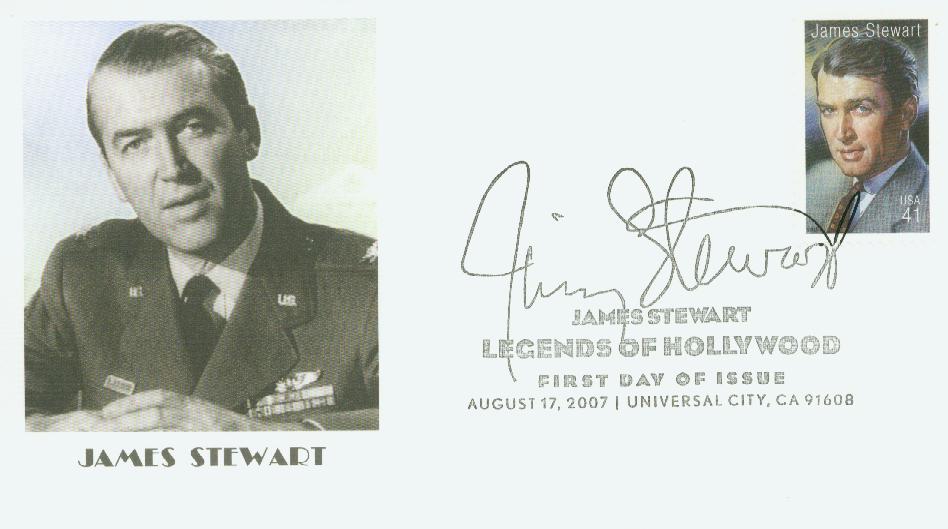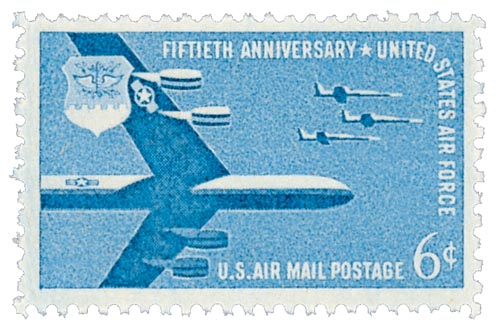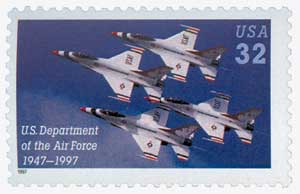
James Stewart
Legends of Hollywood
City: Universal City, CA
Quantity Issued: 55,000,000
James Stewart Goes To War

On March 22, 1941, James Stewart was inducted into the US Army, making him the first major US movie star to don a military uniform during World War II.
James Stewart developed an early interest in flying and got his pilot’s license in 1938. Around that same time, he worked with other celebrities to establish Thunderbird Field, a pilot training school in Arizona.
Although he was a big Hollywood star, Stewart felt an obligation to join the war effort. In October 1940, he first tried to enlist in the US Army but was rejected because he was five pounds underweight. He then enlisted the help of a trainer to gain the weight and tried again, this time with the Air Corps. Though he failed his first attempt, he convinced the enlistment officer to try again, and he managed to pass the weigh-in. Stewart was then inducted into the Army on March 22, 1941, several months before the US officially entered the war.

After undergoing service pilot training, Stewart’s first assignment was an appearance at a March of Dimes rally. He would also participate in several radio broadcasts promoting the war effort and the Winning Your Wings recruitment video, which helped bring in 150,000 new recruits. Stewart didn’t want to spend the war as a recruiter or trainer, he wanted to go to Europe and fight.

Eventually, Stewart appealed to his commander to recommend he be entered into combat. He succeeded, and Stewart was assigned to the 703rd Bombardment Squadron. Within three weeks, he was promoted to its commander. Stewart finally went on his first combat mission on December 13, 1943, a bombing run over U-boat facilities in Kiel, Germany. Stewart led two more missions in December and January before being promoted to major. Then in February, he earned the Distinguished Flying Cross.

Exactly three years after his induction into the Army, Stewart flew his 12th combat mission in an attack on Berlin. He was then made group operations officer of the 453rd Bombardment Group, leading missions into Nazi-occupied Europe. He went on to earn another Distinguished Flying Cross, the French Croix de Guerre, and the Air Medal with three oak leaf clusters. He was promoted to full colonel in March 1945, making him one of just a few Americans to rise from private to colonel in just four years during the war.

After the war, Stewart remained in service of the Army Air Forces and later the US Air Force Reserve. He served as an Air Force Reserve commander at Dobbins Air Force Base in Georgia and flew as a non-duty observer on an Arc Light bombing mission during the Vietnam War. Stewart retired from the Air Force on May 31, 1968, having served for 27 years. He received a number of awards as well as the Air Force Distinguished Service Medal and Presidential Medal of Freedom.















